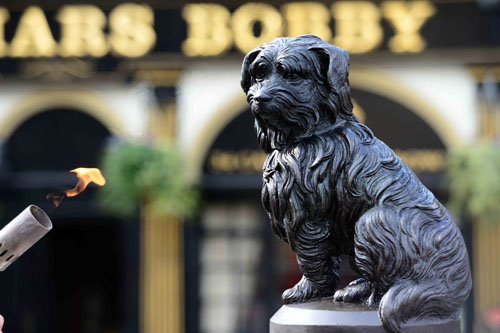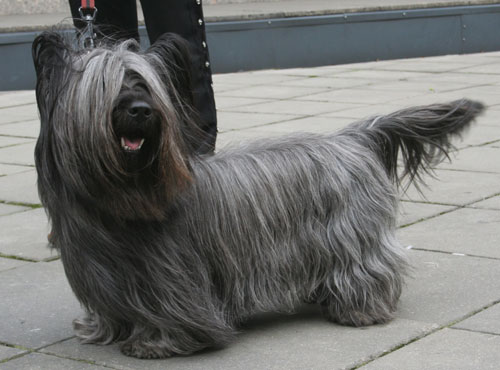SCOTLAND’S most famous dog has another reason to wag its tail – as new research hopes to eradicate a deadly disease which places it at risk of dying out.
The Skye terrier, celebrated in the world-renowned tale of Greyfriars Bobby, has been threatened with extinction for years.
Many of the pooches are affected by a strain of hepatitis – an inherited disease thought to strike dogs whose parents carry an as-yet-unidentified gene mutation.

But now experts believe they are on the path to finding a DNA test for the potentially fatal liver condition by the end of 2016.
The Skye Terrier Club (STC), which has funded the project, said a test would have a “major” impact on the breed population worldwide, which is estimated to be less than 5,000.
Last year, only 63 Skyes were registered within the UK.
Numbers are so low that it is the third most vulnerable native breed on the Kennel Club list, faring only better than otter hounds and smooth collies.
Dr Cathryn Mellersh, head of canine genetics at Animal Health Trust (AHT) who are conducting the research with Cambridge University, said the team is “confident” it will develop a test breeders can use to identify carriers of the mutation.

In doing so, they will be able to reduce the risk of producing any more Skyes that will develop the disease.
Researchers have just sequenced the entire genome of a Skye terrier with hepatitis and a healthy dog in order to spot the differences and pinpoint the mutation responsible for the disease.
They are now analysing the vast amount of genetic data – which if printed out on A4 sheets would produce a pile of paper more than 1km high – following the same method which they have used for other breeds and diseases.
Maud Hawkes, chair of the STC health committee, said: “It’s the very small gene pool which we have [for Skye terriers].
“The dogs which are left are so closely related now that there will be potential carrier dogs [for hepatitis] in every country.
“Without a DNA test you can never know if you are mating two carriers together. The incidence of hepatitis is low but if we can get this DNA test that will be one threat which we can avoid to put the breed in a better position for future survival.”
Greyfriars Bobby is best known for taking up vigil for years during the 19th century at his master’s grave in Edinburgh’s historic Greyfriars churchyard, until he also died.
A statue of the loyal pooch was such a hit with tourists that the council had to place a sign around his neck asking visitors not to rub his nose, as touching it “for luck” had worn away the black paint.
